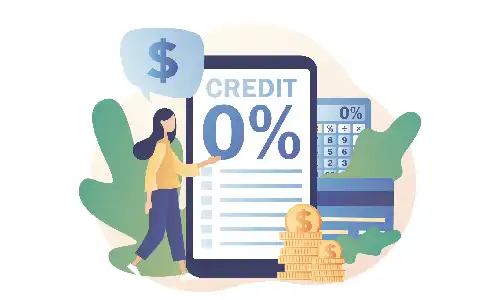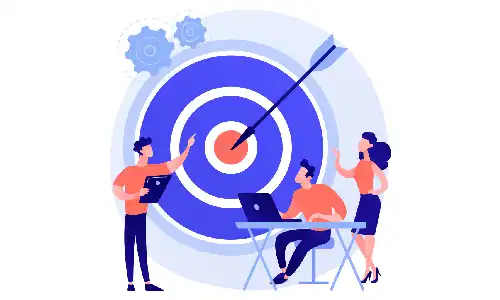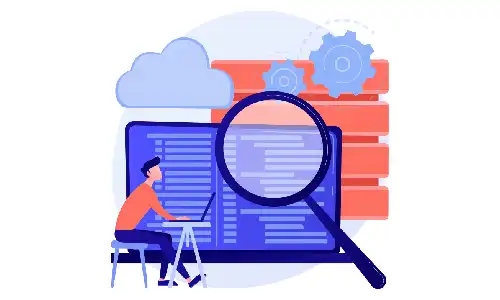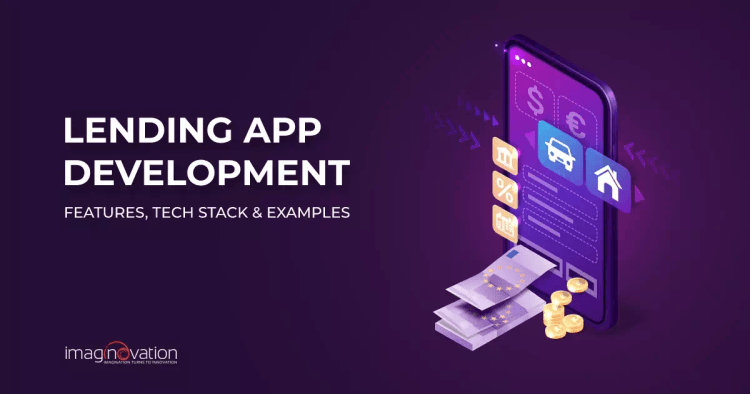Modern consumers look for accessible services from the comfort of their homes, and that's why there's a massive surge in the popularity of money loan apps.
Traditionally, money lending was a time-consuming business for both consumers and businesses. However, with the advent of lending apps, the process has been streamlined, providing on-demand money lending and borrowing facilities with minimum physical documentation and faster approvals, saving both time and effort.
In this guide, we will provide the essential details about building a lending app, including the core features it should have, the tech stack required, and some prominent examples.
Read on to learn everything about money lending app development.
What is a Lending App?
Sometimes, we must borrow money to deal with various financial situations - from paying mortgages to car loans.
The money lending app is a digital solution that allows you to borrow money from any bank in your country.
Such an app allows you to borrow money hassle-free without having to physically visit banks, loan brokers, or other financial institutions or borrow from family or friends.
It permits you to compare the available interest rates, assess which one suits you best, and see if you qualify for the loan. The best is that you can be assured that your information stays protected, and you can repay the loan using the same application.
A lending app benefits more than just the borrowers. It also helps lenders reduce their operation costs, speed up the KYC procedure, simultaneously serve many customers, and reach new markets.
How Do Lending Apps Work?

The lending method of such an app is pretty simple, and it operates on the credit card concept.
There are a few steps involved in a loan lending app.
Step #1: Onboarding
After you install a lending app to your device from the app store and open it, you will land on the app’s home page.
Now the first step for you (app user here) is to register yourself here and make your user account. This will require you to fill in specific details, including your name, contact number, email id, and social handles.
After this, you can log in with your credentials and explore the app.
Step #2: Select The Loan Details
Now you arrive at a screen with loan options. Here, you can check the different loan categories this app offers.
Select the loan category of your choice. Next, tally the interest rate on the amount of money you wish to borrow and select what seems right. Finally, finalize the duration of the loan.
Step #3: Verification & Validation
This step includes processes that check your eligibility for the loan - your credit score and other financial details.
It then takes you to a screen where you can add details like address, education, employment history, and income details.
Step #4: Connect Your Bank Account to The App
You need to link your bank account with the app so that the loan amount is transferred automatically to your bank, and the app notifies you.
Similarly, at the time of loan repayment, a fixed amount can be deducted from your bank account automatically on the due date.
Also Read: How Technology Is Transforming the Consumer Lending Industry
Key Features to Include in Lending App
To build a lending app that has a sleek interface is simple to use, and can win over your users, you must choose its features set carefully.
Here’s a list of features your app must have that’ll make the life of your users easier.
1. Registration
User registration is one of the critical features of almost every application. However, to make your lending app stand out:
- Allow users to browse the app and check its essential functions without registering.
- Allow your users to register and log into their account with the help of an Email ID, phone number, or via social handles such as Google or Facebook.
Remember, at this stage, a simple and frictionless user experience paves the way for higher user adoption.
2. Borrower’s Profile
This feature allows users to add and modify their profile details (name, location, etc.).
A best practice you can apply here is hiding the user profile details by default. But for the first-time user, you can add template info to all fields as a hint.
3. Loan Application Form
This feature has to be the core of your money-lending app.
With this feature, users should be able to create their loan application, choose the estimated payback period, communicate with lenders, and view the status of the application.
To simplify users, consider breaking the loan application procedure into distinct steps, guiding them through the process.
4, Loan Calculator
This is a perfect feature for defining the user's monthly installments/payments, down payment, interest rate, amount of interest, and loan fees.
Instead of using a separate calculator, this feature manages the calculation work for loans.
5. Payment & Billing
Once a loan is funded, users will need a place to check all pending and completed EMIs. They would also need to check the remaining debt amount.
Other than that, payment gateways integrated with the app offer users different payment tools and platforms to facilitate fast and secure money transactions.
6. Transactions & EMI's
To repay the loan, a borrower must pay EMIs covering both interest and principal. When all the EMIs are paid, and the loan is returned ultimately, all transactions saved here serve in easy audit and further reference.
7. Transfers
Your app must allow your users to transfer funds to a bank account.
8. Credit Score
If you integrate your app with a credit score service, it will help the users to check their loan eligibility.
9. Notifications
Push notifications are a great way to alert and notify users of upcoming payment schedules/due dates.
The following additional features can help make your money-lending app all the more attractive for your users:
- Reward points & ratings
- Chatbots
- Live chat support
- Manage discounts and offers
- Customizable reports for all parties
How to Create a Lending App?
Before you build a lending app for your business, you must understand market trends and expectations. Next, list the various MVP (minimum viable product) features your app should meet and then select the technology stack to build the features cost-efficiently.
Since the competition in FinTech is getting intense, you must carve out a niche for your startup and build a powerful lending app.
Here are all the stages of building a money-lending app.
1. Discovery

The Discovery phase is all about building the scope of your app. First, it makes the concept and idea behind the application. Then, it lays the foundation for the following stages of app development.
You can begin by defining the idea of what kind of loans your app will facilitate, what type of problem the app will resolve, its functionality, and who the target audience is.
The discovery phase of your app should talk about the following:
- The idea of the app - Get the founder's perspective here by interviewing them and understanding the concept. And then structure your idea.
- Define the target audiences - which group of end-users will this app apparel, and what pain points and problems will this app resolve.
- Conduct market research - Research and analyze your competitor’s business. Learn from their success and failure.
- Create the application blueprint - define project scope, budget, time estimate, and deliverables. Set priorities and deadlines
- Identify which regulatory laws the prototype will comply with - aggregate all regulatory laws and draft the requirement specifications document based on it.
2. Lending App-Specific Essentials
Start by selecting a legal entity. For example, a Limited Liability Company (LLC) and a corporation can be your options. Both protect you from creditors in case of force majeure or bankruptcy. However, both are taxed differently.
An LLC is taxed as a pass-through, which means its profits and losses are reported on the owner's tax returns. On the other hand, a corporation is taxed as a legal entity that can generate income.
Next, you will need to register a business name within the country you wish to operate this business. Remember that your trademark name must be different from the legal name, and it should be available at the uspto.gov register of trademarks.
It would be best if you also secured the initial capital for your peer-to-peer money lending app development and the initial loans. Investors get attracted to FinTech platforms where real users look for loans, so you will need some funds to begin before the investor money kicks in.
You can secure the initial capital from Initial Coin Offering (ICO) or Initial Public Offering (IPO). You can also opt for Venture Capital (VC) or bank loans.
Lastly, you must select the bank that will store your operational capital.
3. Finalize Technology Stack
You must carefully select the most appropriate tech stack when developing a fintech app. A tech stack or the solutions stack defines the combination of technologies you need to build and run your app.
It would help if you considered many aspects at this stage - they include data security, performance, future scalability, ease of integrations, ease of adding additional features, etc.- this is where the right tech stack comes in.
You can use the below-mentioned technologies to build your mobile lending application.
- Framework: Java 8 +, Lagom, Play, Akka, Spring, Slick, Spring Boot, JSON
- Front end: Bootstrap, JavaScript, React, HTML5, CSS, JQuery, Angular, React
- Mobile Platforms: React Native, Android, iOS, Swift, Objective-C
- Web Services: SOAP, REST
- Programming Language: JSON, Core JAVA
- Database: MongoDB, PostgreSQL, SQL
- Blockchain: hyper ledger Fabric, Ethereum, Corda, Stellar
4. Gather The Team
Based on the final scope of your app and the tech stack chosen, you should be able to put together a team consisting of a team lead, UI/UX designers, iOS and Android developers, front-end developers, back-end developers, and QA specialists, and a project manager.
You can either build a team or you can outsource the complete project from an specialized app development company like Imaginovation.
5. Design
The design phase is crucial because it presents the earliest vision of the founder’s idea. At the end of this stage, you get to see the wireframe or/and prototype that shows the user experience with the money lending app.
Here, every executable action and icon on the wireframe are programmed as independent features by the programmer.
The design phase should focus on maximizing the aesthetic of your app while also improving its user engagement rate, responsiveness, and efficiency.
6. Development and Testing

The development and testing is another critical phase of money lending app development.
This phase results in an MVP or fully functioning scaled app that is complete with all functions.
An MVP, a short form for a minimum viable product, is an application with basic features released to test the idea’s acceptability in a chosen target market.
Once you reach a desirable customer satisfaction rate for the MVP solution, start developing the scaled-up app with more customer-oriented features.
Is there anything else you need to consider while developing a loan lending app?
Well, actually, yes.
Some more things will help you tremendously while building a money lending application. While a development team is one of the primary requirements, that alone is not enough to move forward. You will need additional units to build the app, such as:
- The financial adviser ensures you take care of various government laws and regulatory terms and conditions of the country.
- A legal adviser for advising you over various financial matters of the app.
- Banking partner for lending the loan amount to your end-users.
- Marketing company for reaching your target users.
Examples of Lending Apps
Knowing you are financially unprepared for unexpected expenses can be very stressful. What should you do when you are strapped for cash before your next paycheck?
Let's check some apps that lend money that might be right for such situations.
SoFi
SoFi or Social Finance, Inc was founded in 2011 by Stanford Business School students. Interestingly, it was based on an alumni-funded lending model.
SoFi personal loans is an online lending solution that offers unsecured personal loans in the USA. Loans from $ 5,000 and $ 100,000 are available for two to seven years.
It is a great option for someone with good to excellent credit.
The minimum credit score requirement at SoFi is 650. Loans can be used for personal, family, or household purposes, and borrowers receive funds in just a few days of approval. The app is well-reviewed, with 3.2 stars on Trustpilot.
Brigit
Brigit is an app that can get you up to $ 250 without undergoing a credit check. Moreover, after submitting a request, you can get an interest-free cash advance in as little as 20 minutes.
Brigit offers two plans to select from- Free and. The free plan presents financial insights and tips to you, but it doesn’t give you any access to cash advances. For that, you’ll have to enroll in the Plus plan.
Zuben Mathews, the co-founder of this fintech app, shares how as a student, despite earning a scholarship and regular allowances from his mother in India, he often found himself without a credit score, living paycheck-to-paycheck literally.
Unlike its competitors, Brigit's focus is more targeted; it has no aspirations to overload its users with features. Instead, the company wants its users to gain their financial footing.
Stressing this, Zuben says, "I can't understand budgeting if I'm in financial stress, and one of the main causes of financial stress would be not having money when I'm deserving of it."
Chime
Chime is associated with Chime’s Checking Account. With Chime, users can receive directly deposited paychecks up to two days in advance. Moreover, the app can detect any unauthorized expenses.
For example, if a user loses their debit card or notices a suspicious transaction, they can instantly disable that card from the app.
Chime comes with a SpotMe service, which facilitates account holders to overdraw their accounts up to $ 200. The limit for new users, however, is $ 20. In addition, Chime deducts the overdraft amount from the user's next paycheck, helping users cover expenses without worrying about overdraft fees.
Chime accounts are free. It doesn't impose bank fees on its customers; It earns revenue from fees charged to merchants for each transaction.
When Ryan and Chris (co-founder of Chime) began their journey with Chime, they weren't strictly focused on when the app would hit ten million-strong membership. Their priority from the beginning was the market fitness of their product. Ryan says, "We didn't know that we'd have any users, so our priority was to find product-market fit.”
Build a Powerful Lending App with Imaginovation
The money lending apps (if prepared with much thought) are doing pretty well these days. People are looking for easier and simpler options beyond the traditional banks for their loan requirements.
If, like many other startups, you plan to invest your money into building a customized lending app, talk to us.
We at Imaginovation can build an innovative fintech solution for you. We promise to take the technical weight off your shoulders and create a solution your customers love.
Imaginovation is an award-winning web and mobile app development company with vast experience crafting remarkable digital success stories for diverse companies. Let's talk.
Ready to build an app, but not sure where to start?
We've got you covered. Click the button below to get started.





